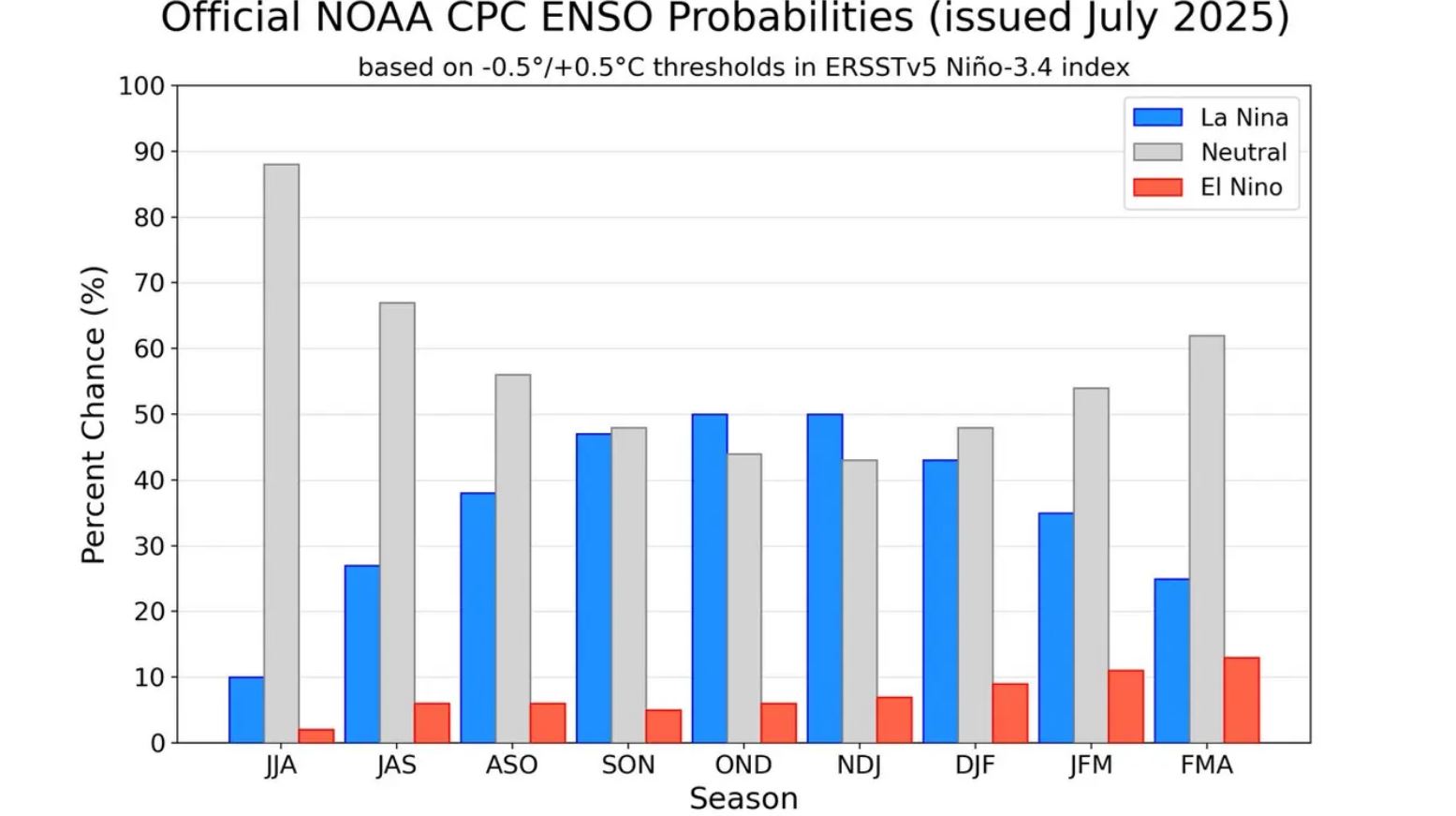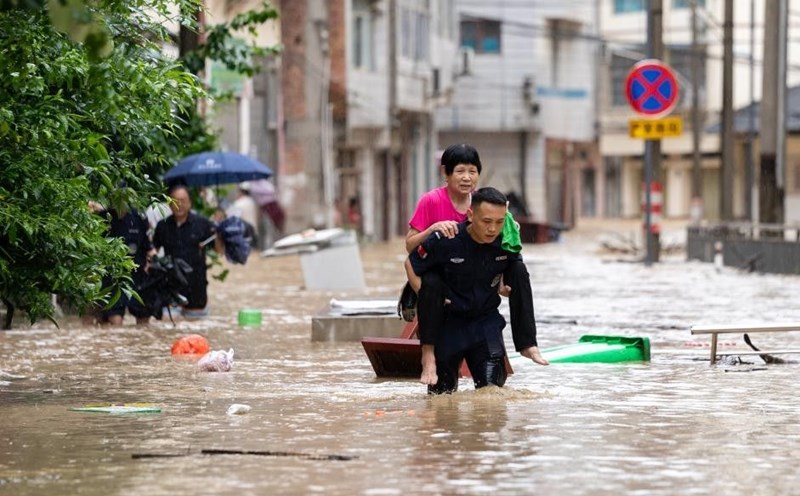With no clear signs like El Nino or La Nina, neutral states are making hurricane and weather forecast models more unpredictable than ever - from North American winter to East Asian and Southeast Asian typhoon season.
According to the National Oceanic and Atmospheric Administration (NOAA), most of the central and eastern Pacific is in the neutral range, with sea surface temperatures ranging from -0.5 degrees Celsius to +0.5 degrees Celsius above average. This means that both El Nino and La Nina have not completely controlled climate models.
NOAA's latest weather forecast shows that ENSO will remain neutral until at least the end of 2025, or even until early next year.
Of the more than 10 forecast models, only 3 show a weak La Nina by the end of the year, while most remain neutral through the winter. This makes the global meteorological community cautious.
Neutral states are often accompanied by the silence of jet streams the decisive factor in the flow of the atmosphere across the intercontinental scale. When the jet Stream is not significantly affected, the weather becomes localized that is, regional, off-season factors and small-scale fluctuations can cause extreme weather patterns in each individual area.
This is especially noteworthy for the winter in North America, where forecasts show the southern United States could be warmer than usual, while the northern region will be colder.
In Europe, the upcoming winter could be dominated by more North Atlantic cyclones, causing weather to fluctuate between cold and humid storms. Areas such as Australia, Japan or China may also face more unpredictable models of heavy rain and storms due to the lack of regulation from El Nino or La Nina.

For Vietnam, the impact of the neutral ENSO becomes even more noticeable when the country enters the peak of the rainy and stormy season from July to November. According to the National Center for Hydro-Meteorological Forecasting, this year's storm season is forecast to have the same number of storms and tropical depressions as the average of many years (about 10-13 storms in the East Sea), of which 4-6 storms are likely to directly affect the mainland of Vietnam. However, it is the new neutral ENSO state that is the factor that could "turn a surprise" this year's storm season.
Statistics show that in ENSO neutral years, the number of storms forming right in the East Sea is often higher than in El Nino or La Nina years. In addition, the path and intensity of storms are also becoming more unpredictable. The storm may appear later, intensify abnormally quickly, or suddenly change direction near the shore. Unseasonal rain, hot weather during the rainy season and phenomena such as tornadoes and extreme thunderstorms are also more likely to occur.











